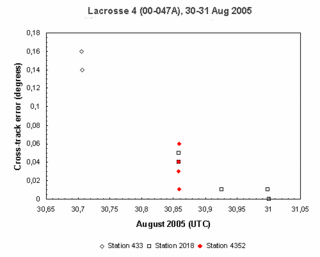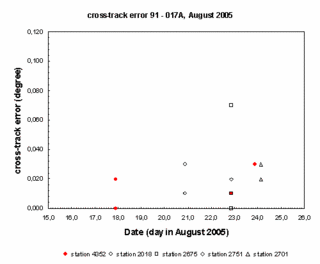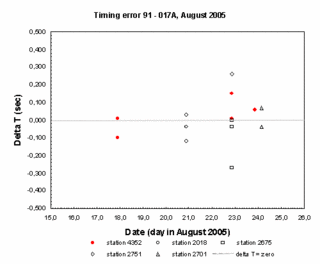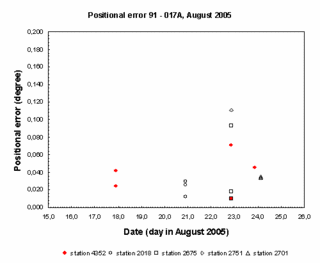


Another test of accuracy: the plots show my positions for Lacrosse 4 (00-047A, #26473) obtained last night, along with positions obtained by stations 433 and 2018. The red dots are my data. The data are compared to Mike McCants elset 05420.93550308.
Station 433 uses a LL video camera, and 2018 uses stopwatch and binoculars if I am not mistaken. Note that with regard to delta T, the values should regres from negative values (satelllite early with respect to the elset) before the elset epoch to increasingly positive values (satellite late with repsect to the elset) after the elset epoch (which indeed they do).
Again, my setup seems to perform well.





